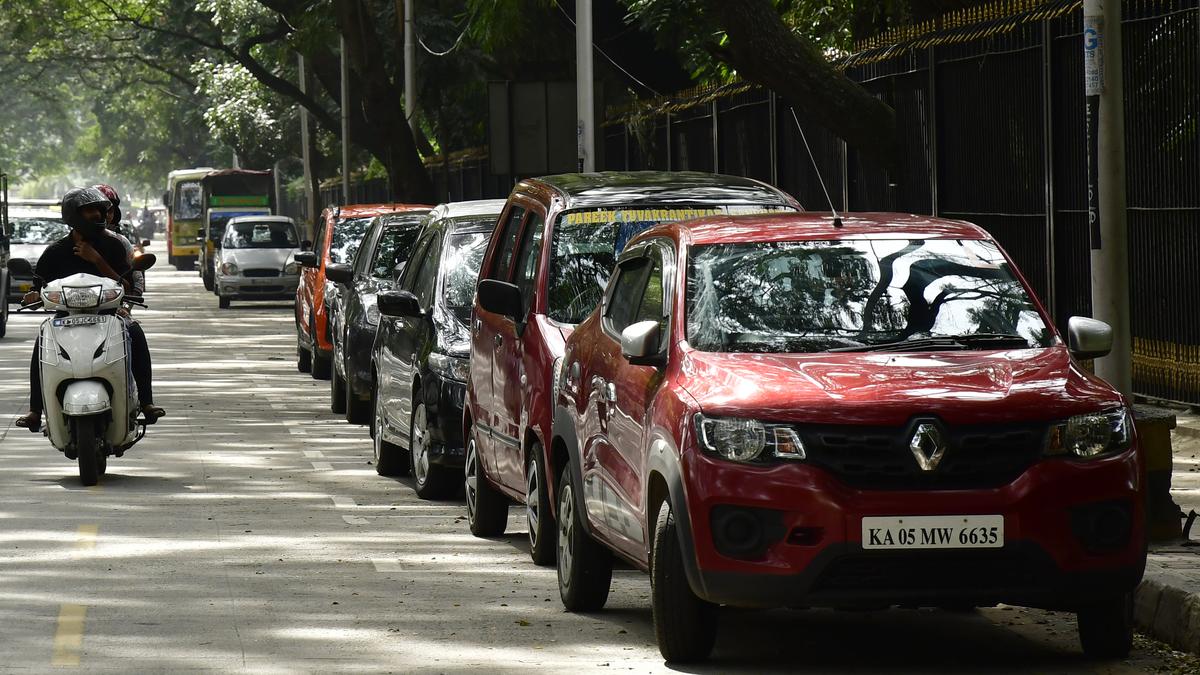
Parking policy: Take it beyond the streets Premium
The Hindu
Streamlined parking as a tool for traffic decongestion is a no-brainer. But the glaring lack of a parking policy, an apparently flawed pay-and-park system, and the ceaseless onslaught of newly registered vehicles in their thousands has left Bengaluru’s roads in a chaotic mess. Can a recent High Court directive effect a change?
Streamlined parking as a tool for traffic decongestion is a no-brainer. But the glaring lack of a parking policy, an apparently flawed pay-and-park system, and the ceaseless onslaught of newly registered vehicles in their thousands has left Bengaluru’s roads in a chaotic mess. Can a recent High Court directive effect a change?
Last month, the Court gave six weeks to the Bruhat Bengaluru Mahanagara Palike (BBMP) Commissioner to submit a detailed project report on the methodology of implementing the BBMP’s Parking Policy 2.0. The much-delayed implementation of the policy has left vast road stretches of the city narrowed down by haphazardly parked two-wheelers and cars, with regulation nowhere in sight.
Approved by the state government as early as February 2021, the Parking Policy 2.0 had its objectives clear: To shift from free, chaotic parking to paid, well-organised parking; to streamline the system by strengthening enforcement through robust active management based on demand. To address the issues, the policy prepared an Area Parking Plan (APP) for multiple zones across the city.
A zonal-level comprehensive parking plan, the APP focused on regulation of on-street parking in commercial and residential areas, off-street parking plans, special parking for disabled persons and cyclists, pricing for parking, management of parking and more.
To activate this, the plan proposed identifying high parking demand areas, existing parking facilities and their utilization besides gaps in demand and supply. The idea was to achieve a far more efficient use of road space, while boosting sustainable mobility options.
The city’s parking chaos stems from a major issue: Encroachment of parking lots within commercial, institutional and even residential buildings. As mobility analyst Ashwin Mahesh points out, “All these buildings were given permissions and plan approvals to construct and occupy only on the assumption that the spaces they have indicated for parking will be used for parking.”
The BBMP, he says, never imagined that single family homes, Ground +1 and +2 homes, would eventually become triple family homes, with one family on each floor. “Most of those buildings were constructed showing parking space for only one vehicle. Now every family on every floor has one vehicle. It is physically impossible to park there. All have externalized their requirement,” he explains.











